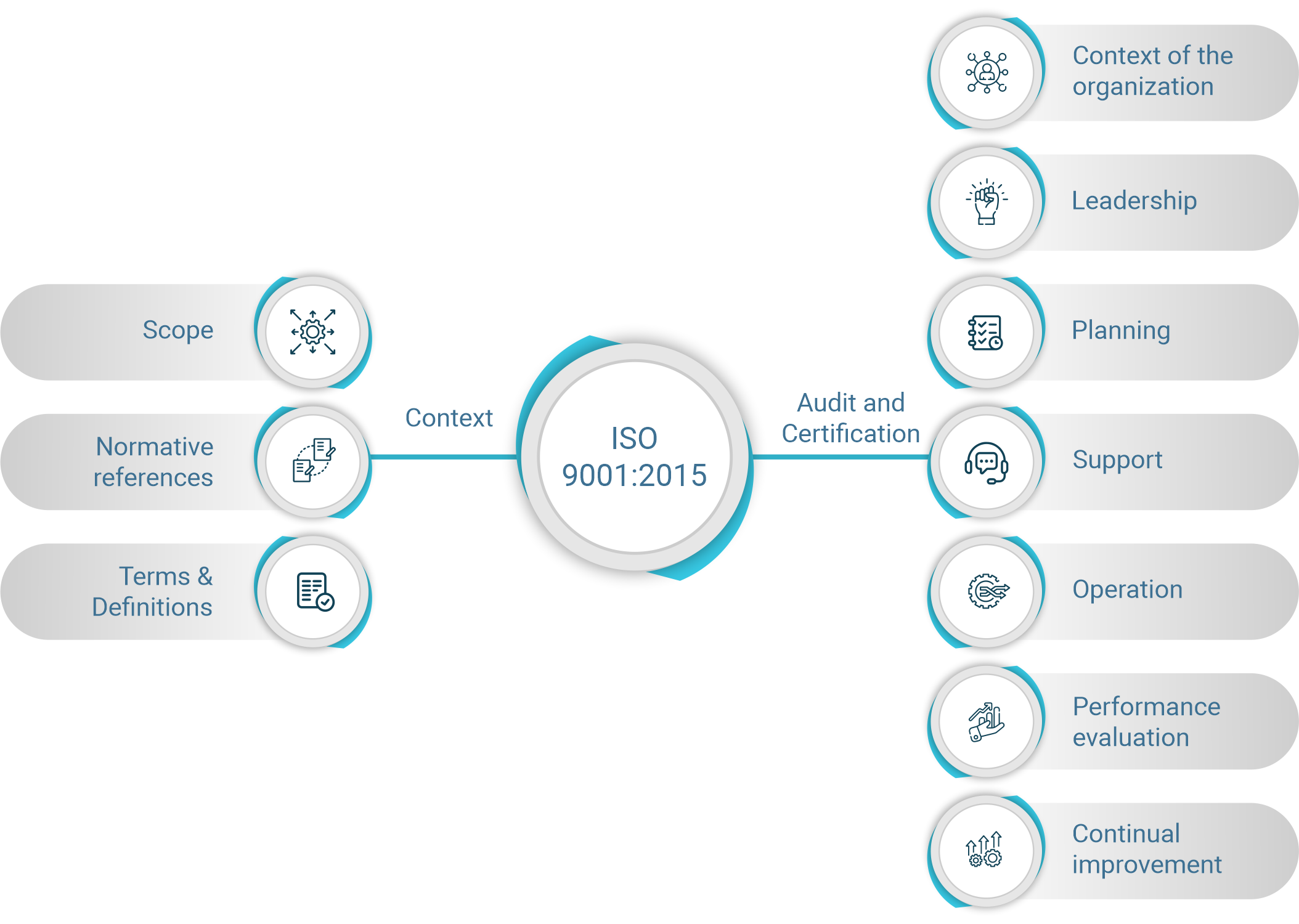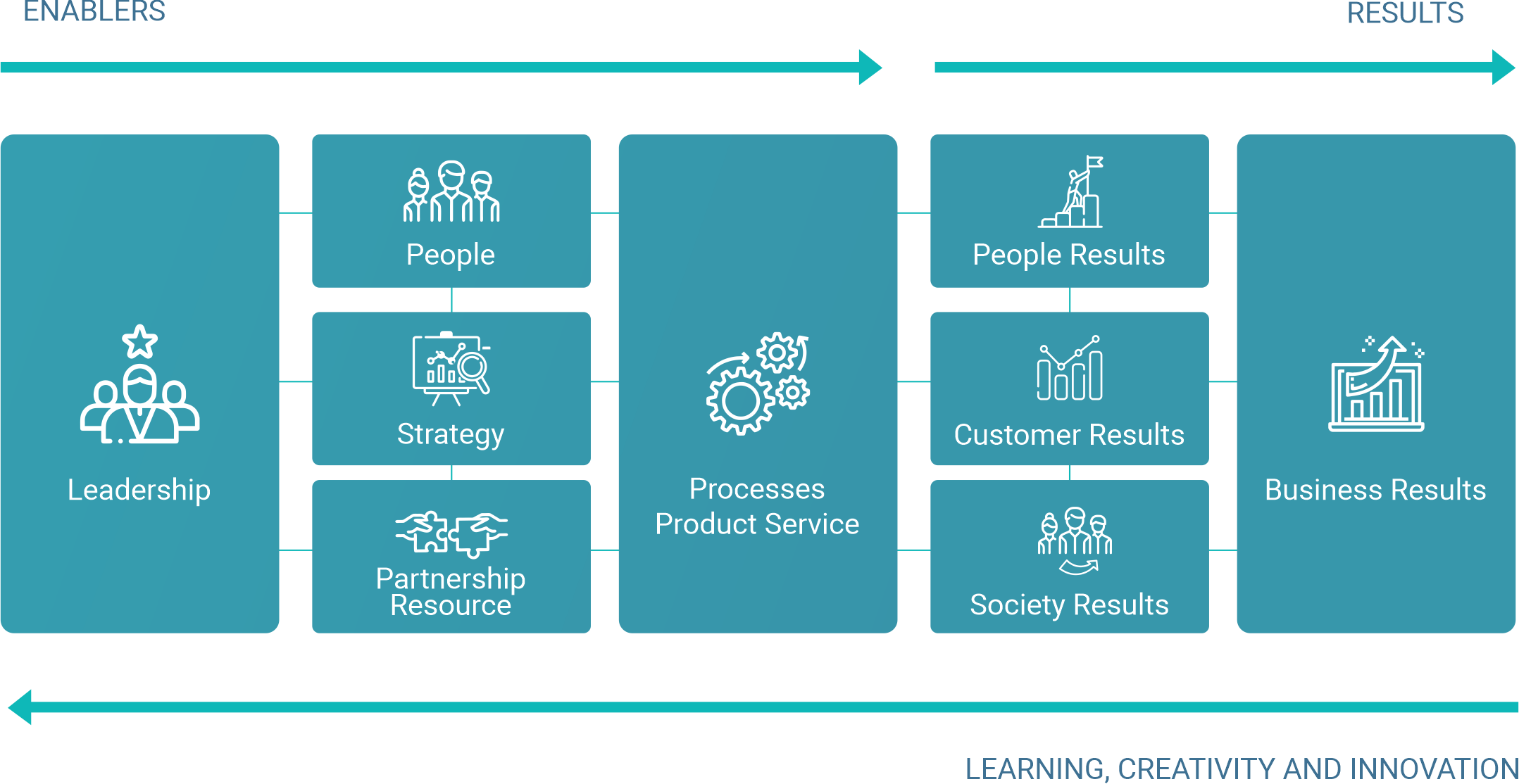8.2 Generic quality management systems and other relevant standards#
This section summarises the generic quality management systems that an NSO should consider in formulating its quality management approach, whether it builds general quality management principles into its quality assurance framework or makes use of a separate generic quality management system. The chapter also references some standards that are closely related to quality management and should be considered, in particular standards associated with risk management and metadata management.
8.2.1 ISO 9000 family of quality standards#
The International Organization for Standardization (ISO) is the most prolific source of international standards, including quality-related standards, in the world.
Particular prominence is given in this document to the ISO 9000 family of quality standards as they articulate general quality management principles and provide the basis for quality certification.
The members of the family are.
ISO 9000:2015 Quality management systems – Fundamentals and vocabulary (🔗);
ISO 9001:2015 Quality management systems – Requirements (🔗);
ISO 9004:2018 Quality management – Quality of an organization - Guidance to achieve sustained success (🔗).
They form a family in the following sense: ISO:9001 and ISO 9004 each depend upon ISO 9000 for underlying quality principles and vocabulary; jointly ISO 9000 and ISO 9001 constitute a general quality management system (although actual certification is in terms of ISO 9001); and implementation of ISO 9004 typically follows ISO 9001.
The standards have to be purchased from ISO. However, ISO 9000:2015 is accompanied by two explanatory documents, both of which are freely available, namely the ISO 9000 Glossary and Quality Management Principles (🔗).
As the standards are expressed in generic terms and not always easy to understand, ISO 9000:2015 Plain English Definitions (🔗), written by Praxiom, is another useful supporting document.
ISO 9000: 2015 Quality management systems – Fundamentals and vocabulary
ISO 9000:2015 (🔗) provides the fundamental concepts, principles and vocabulary used for the family of quality standards. It is the starting point for the definition of quality-related terms in Chapter 8.1.3 — Developing a quality management framework. It defines and describes seven quality management principles as follows.
Principle 1 – Customer focus: Organizations depend on their customers and therefore should understand current and future customer needs, should meet customer requirements and strive to exceed customer expectations.
Principle 2 – Leadership: Leaders establish unity of purpose and direction of the organization. They should create and maintain the internal environment in which people can become fully involved in achieving the organization’s objectives.
Principle 3 – Engagement of people: People at all levels are the essence of an organization, and their full involvement enables their abilities to be used for the organization’s benefit.
Principle 4 – Process approach: A desired result is achieved more efficiently when activities and related resources are managed as a process.
Principle 5 – Improvement: Improvement of the organization’s overall performance should be a permanent objective of the organization.
Principle 6 – Evidence-based decision making: Effective decisions are based on the analysis of data and information.
Principle 7 – Relationship management: An organization and its external providers (suppliers, contractors, service providers) are interdependent, and a mutually beneficial relationship enhances the ability of both to create value.
ISO Quality Management Principles (🔗) provides the rational, key benefits and action items for each of the seven principles. Many NSOs have been influenced by this expression of general quality management principles, also referred to as total quality management (TQM).
ISO 9001: 2015 Quality management systems – Requirements
ISO 9001:2015 (🔗) specifies requirements for a quality management system when an organization (a) needs to demonstrate its ability to consistently provide products and services that meet customer and applicable statutory and regulatory requirements, and (b) aims to enhance customer satisfaction through the effective application of the system, including processes for improvement of the system and the assurance of conformity to customer and applicable statutory and regulatory requirements.
The standard incorporates the notions of the plan-do-check-act (PDCA) cycle and the process-based approach (see quality management principle four above). It also aligns with risk-based thinking. It comprises the ten sections of which the first three provide context and the following seven provide the basis for audit and certification.

Context: Scope, Normative references, Terms and definitions;
Audit and Certification: Context of the organization, Leadership, Planning, Support, Operation, Performance evaluation, and Continual improvement.
Several NSOs have adopted ISO 9001 as a quality management system and applied for ISO 9001 certification. They include the Statistical Office of the Slovak Republic, Statistics Lithuania, the Philippine Statistical Authority, and the Palestine Bureau of Statistics.
ISO 9004: 2018 Quality management - Quality of an organization - Guidance to achieve sustained success
ISO 9004:2018 (🔗) gives guidelines for enhancing an organization’s ability to achieve sustained success, consistent with the quality management principles in ISO 9000:2015. It provides a self-assessment tool to review the extent to which an organization has adopted the concepts articulated in the standard. It is not a certification standard. It does not appear to have been greatly adopted by NSOs.
8.2.2 ISO 10004: 2018 Quality management – Customer satisfaction#
ISO 10004:2018 (🔗) provides guidance in defining and implementing processes to monitor and measure customer satisfaction.
It is not a certification standard. It is focused on just one aspect of quality management, namely, customer satisfaction. It has potential for application within NSOs, where customers are more commonly referred to as users.
8.2.4 ISO 31000:2018 Risk Management#
Risk is a necessary part of doing business, and, in a world where enormous amounts of data are being processed at increasingly rapid rates, identifying and mitigating risks is a challenge for an NSO. As previously mentioned, ISO 9001 is aligned with risk-based thinking. Thus, ISO 31000 (🔗) is included here to draw attention to its utility in building a quality management framework.
ISO 31000 is an open, principles-based standard, not a basis for certification. It recommends risk management as a part of an organization’s structure, objectives, strategy, processes, and activities. It provides guidance for organizations in developing a risk management strategy to identify and mitigate risks. It places emphasis on the involvement of senior management and the integration of risk management into the organization. Its overarching goal is to develop a risk management culture where employees and stakeholders are aware of the importance of monitoring and managing risk. It recommends having a policy that assigns authority, responsibility and accountability for risk management at the appropriate levels within the organization and that ensures the necessary resources are allocated.
It is becoming increasingly clear from the above description that risk management and quality management should be harmonised and developed in tandem, if not actually merged. The notion of quality gates discussed in Chapter 8.5.6 — Monitoring quality and applying quality gates is an application of risk management.
8.2.5 European Foundation for Quality Management (EFQM) Excellence Model#
The EFQM Excellence Model (🔗) refers to eight fundamental concepts of excellence, which lay the foundation for achieving sustainable excellence in any organization. They are:

Succeeding through the talent of people;
Sustaining outstanding results;
Adding values for customers;
Creating a sustainable future;
Developing organizational capacity;
Harnessing creativity and innovation;
Leading with vision, inspiration and integrity;
Managing with agility.
These fundamental concepts are entirely equivalent to the ISO 9000 quality management principles. They are an alternative expression of the principles.
The Excellence Model provides a basis for certification using nine criteria, five of which are enablers (covering what an organization does and how it does it) and four of which are results (covering what an organization achieves).
The enabler criteria are: Leadership; People; Strategy; Partnerships and Resources: and Processes, Products and Services.
The results criteria are: People results; Customer results; Society results; and Business results.
Each criterion is supported by a number of criterion parts, which describe what can be seen in excellent organizations and which are further divided into guidance points. The Excellence Model is well known to NSOs in Europe.
8.2.6 Lean, Six Sigma, and Lean-Six Sigma#
Lean, Six Sigma, and Lean-Six Sigma are not proprietary products like the ISO 9000 quality family or the EFQM Excellence Model. They are approaches to quality and performance management. They are used in national statistical offices in Ireland, the Netherlands and Scandinavian countries.
Lean - concepts and coverage
Lean is about minimizing cost, cycle time, and waste, and maximizing value. At the kernel of Lean is systems thinking that the value of a system or process is more than the value of its individual components; that value is affected not only by individual activities but also by the way these activities work together.
Though Lean is focused on efficiency rather than quality, it is relevant here as quality management includes efficiency considerations. Specifically, inefficient use of resources results in fewer resources available for quality assurance.
Six Sigma – concepts and coverage
Six Sigma is a business management strategy. A Six Sigma process is one in which a very high proportion of the products manufactured are free of defects. A Six Sigma project follows a defined sequence of steps and has quantified targets, which can be financial (like cost reduction) or driven by customer requirements. Six Sigma seeks to improve the quality of process outputs by identifying and removing the causes of defects (interpreted as errors in the case of an NSO) and minimizing process variability. It involves the use of quality management related methods and the creation of a team of people within the organization who are experts in these methods.
Lean Six Sigma - concepts and coverage
Lean and Six Sigma are complementary and are combined in Lean Six Sigma, which has been an acknowledged certification standard since 2004. Over the past decade, it has been further improved by incorporating new ideas and tools. Further details are available in A Brief Introduction to Lean, Six Sigma and Lean Six Sigma (🔗).
8.2.7 Balanced Scorecard#
The Balanced Scorecard is a strategic planning and management approach that is used extensively in business and industry, government, and non-profit organizations worldwide, including NSOs:
to build a consensus regarding the organization’s vision and strategies;
to align business activities, the vision and strategy;
to improve internal and external communications;
monitor organizational performance against strategic goals (the scorecard).
Whilst the Balanced Scorecard has broader goals than quality management and cannot be considered a quality management system, it is closely related.
Quality management builds on organizational mission, vision and strategies. It includes improvement in communications with users and providers, and strategic goals often include quality goals.
Further details are available in Total Quality Management and Balanced Scorecard, A Comparative Analysis (🔗).
